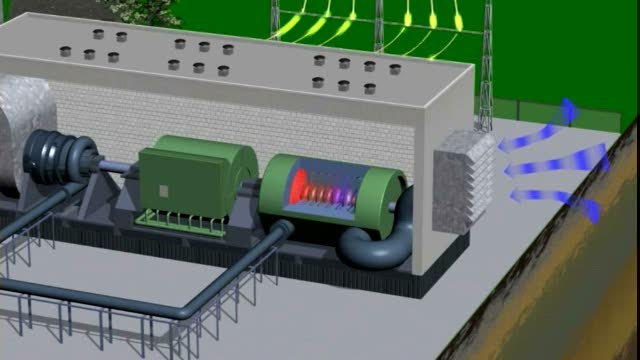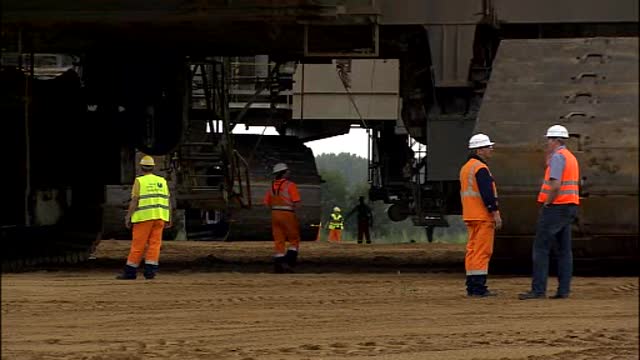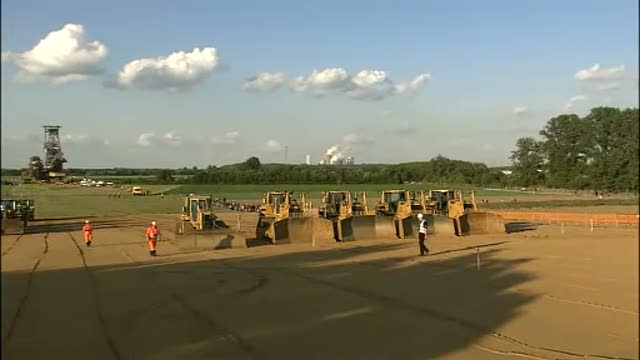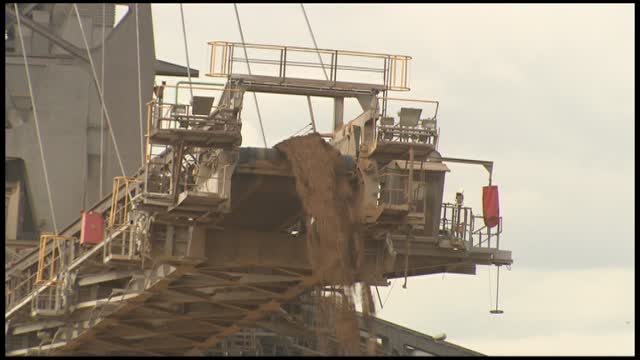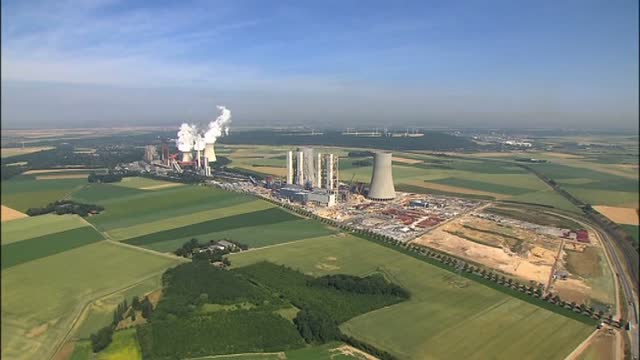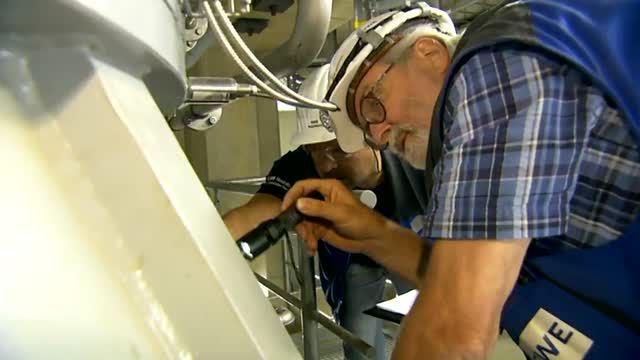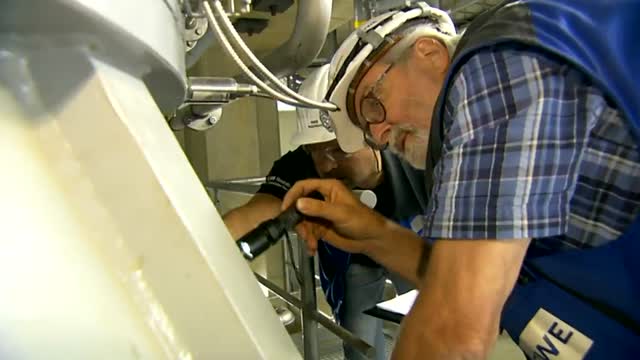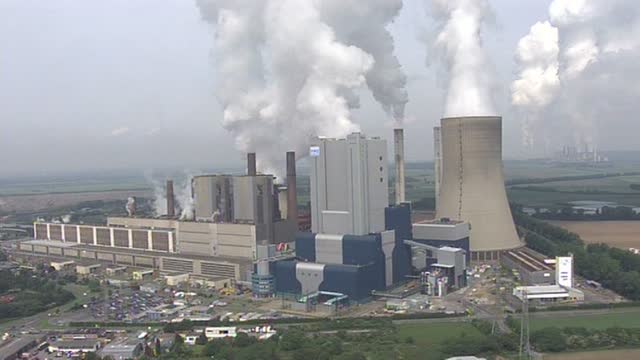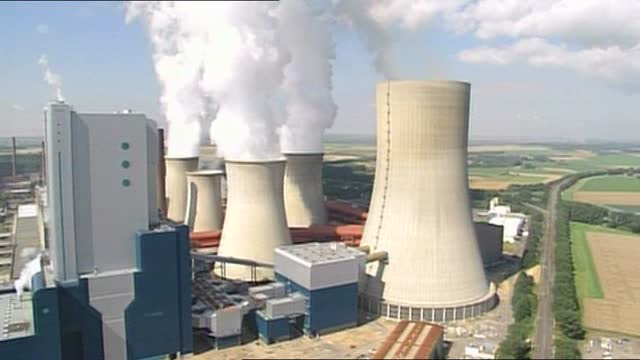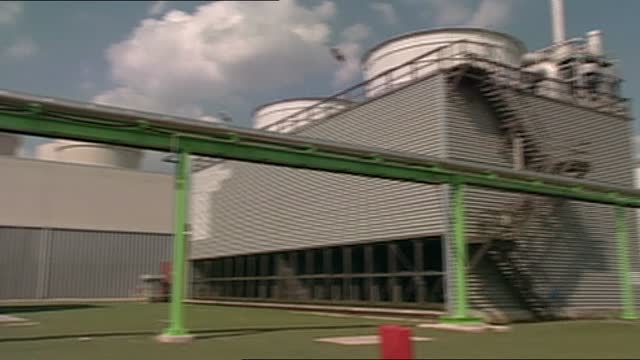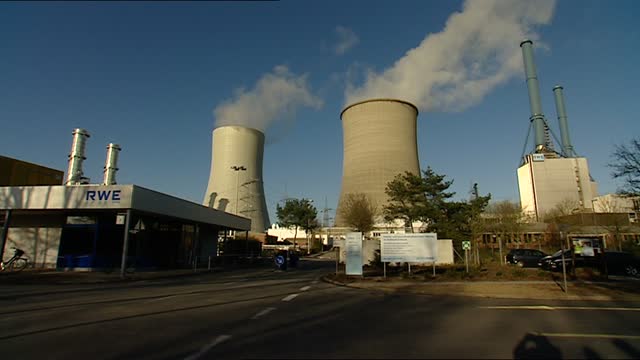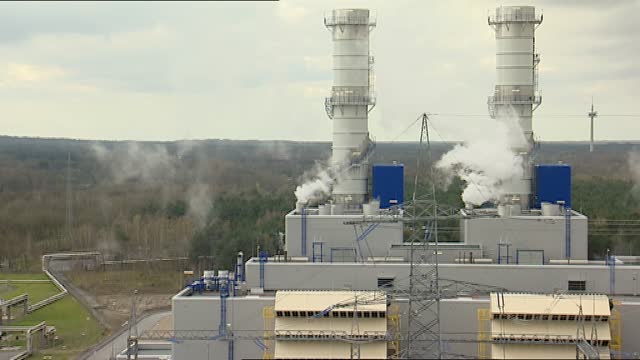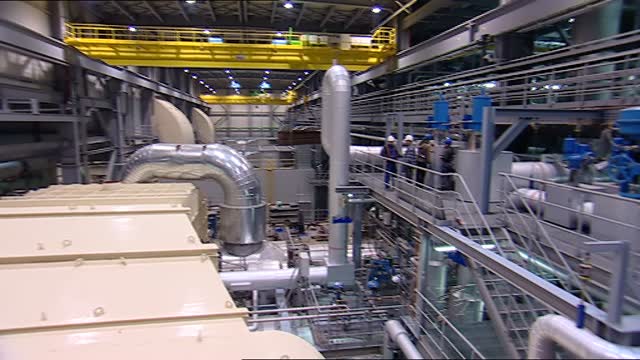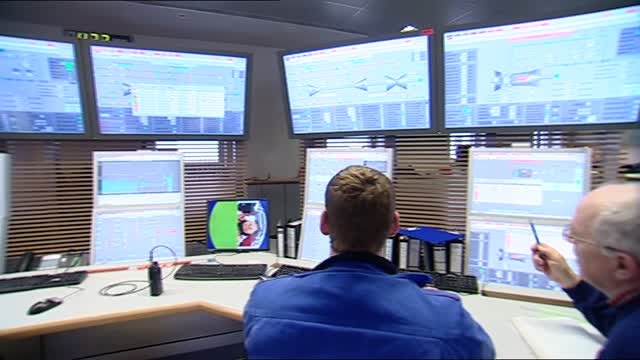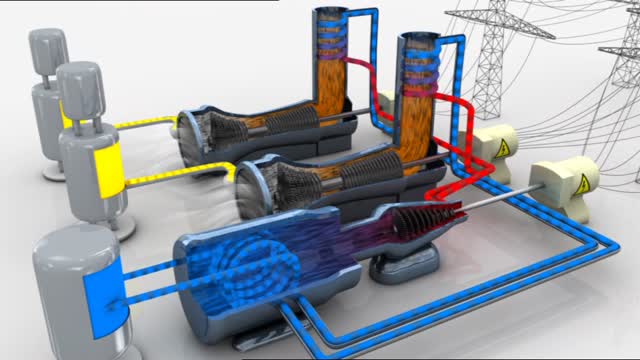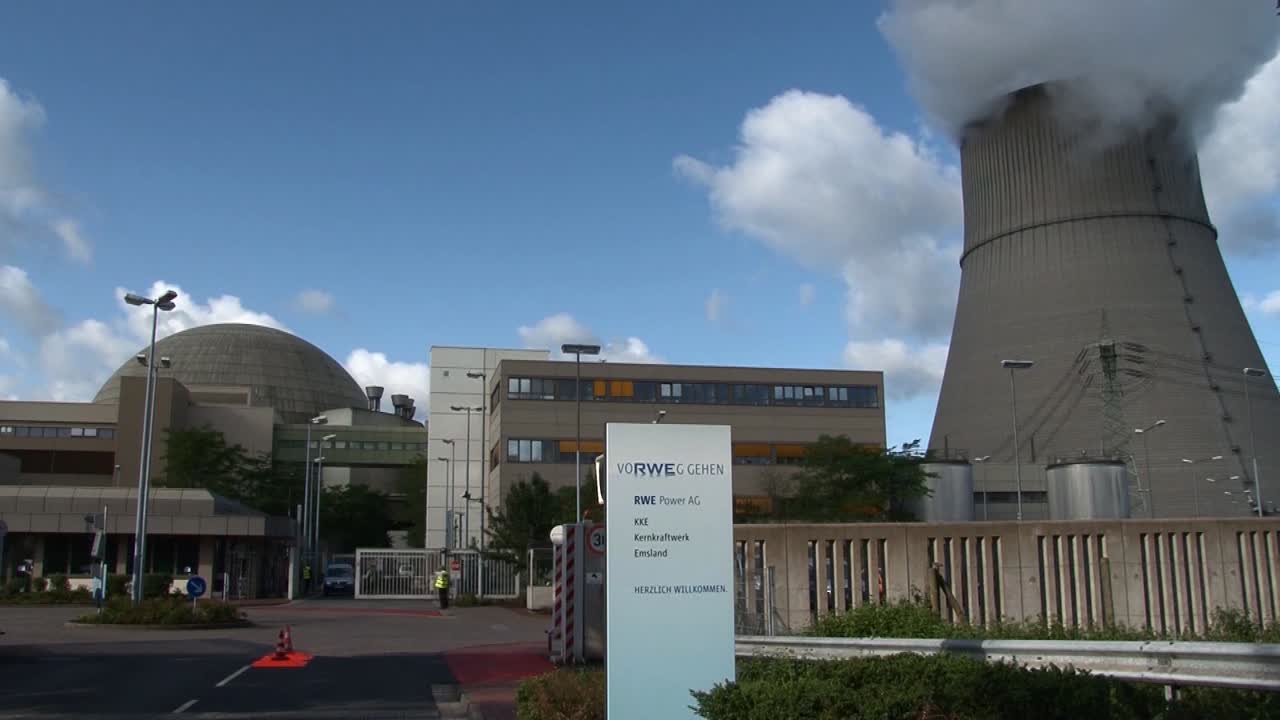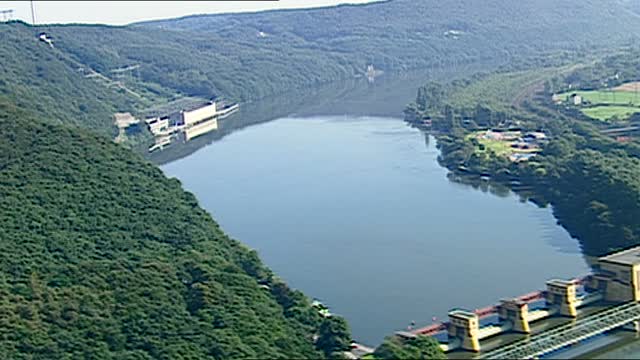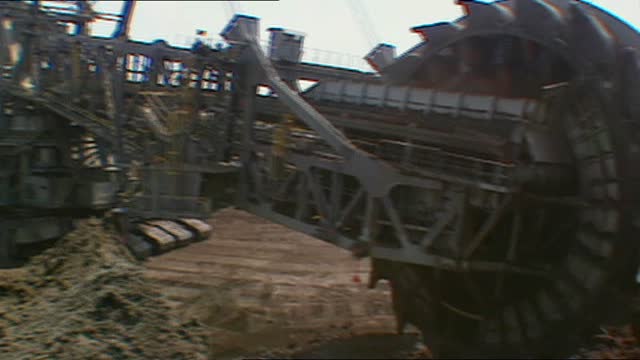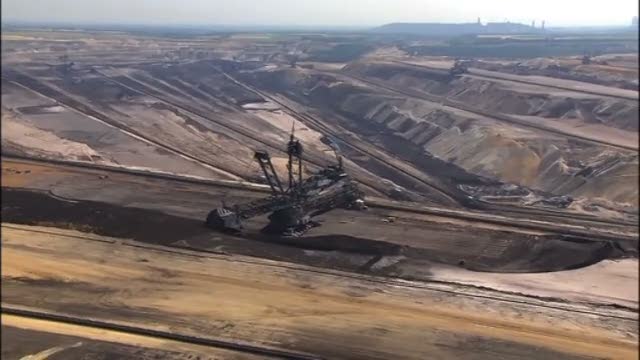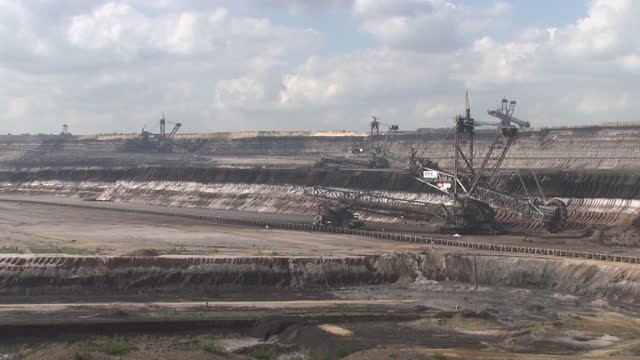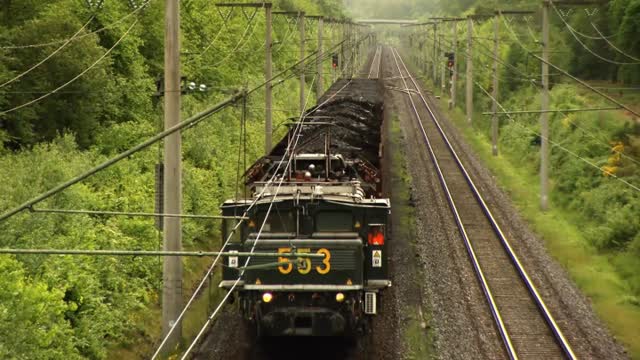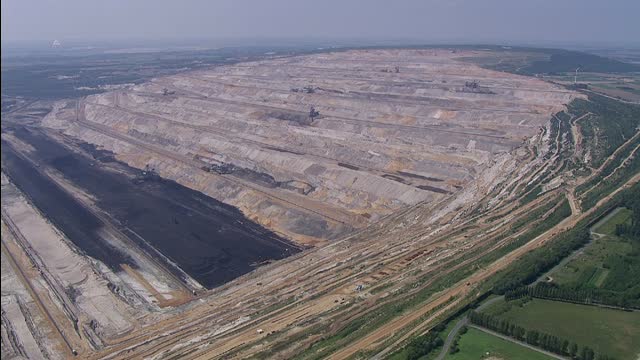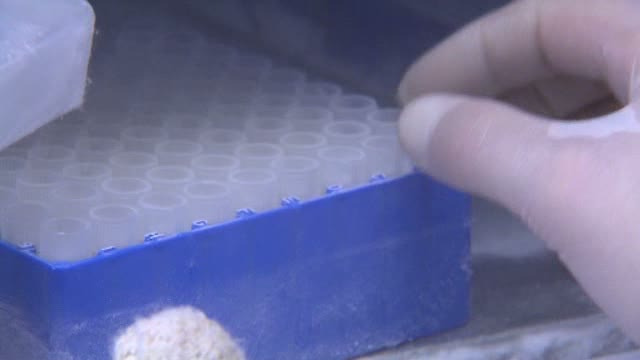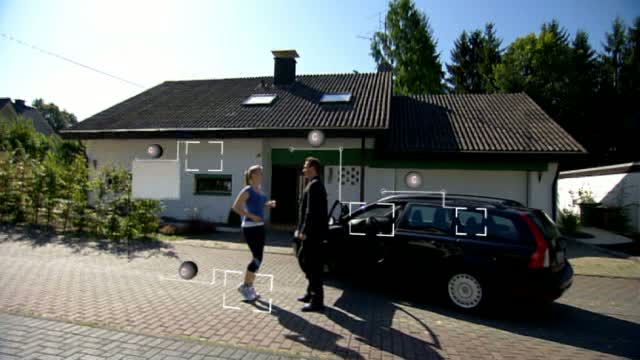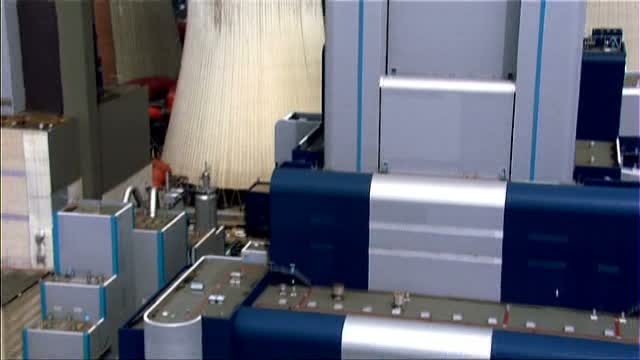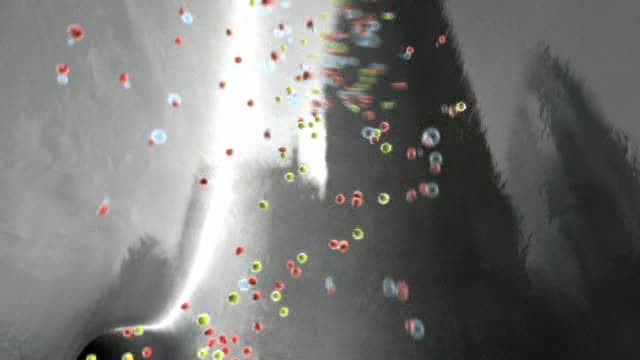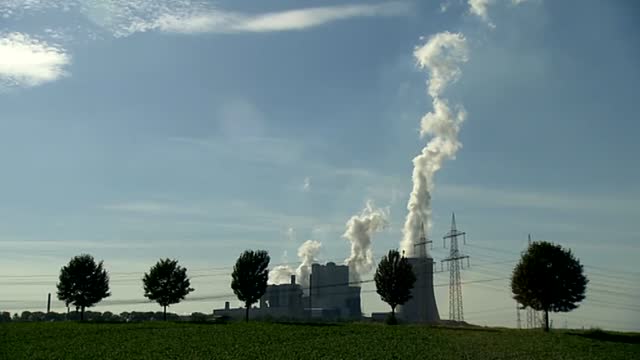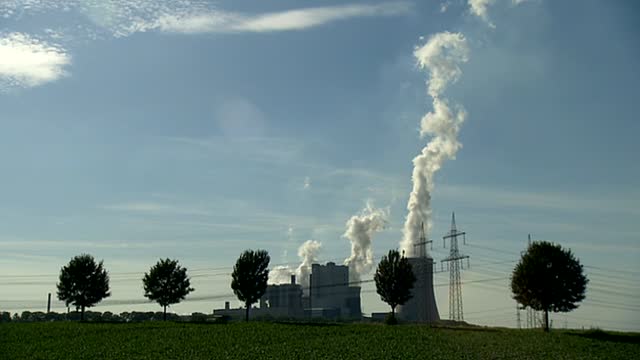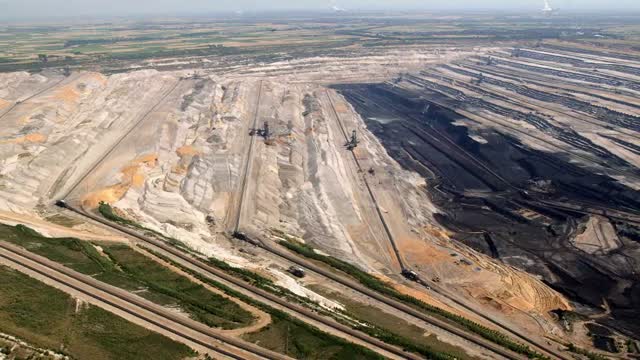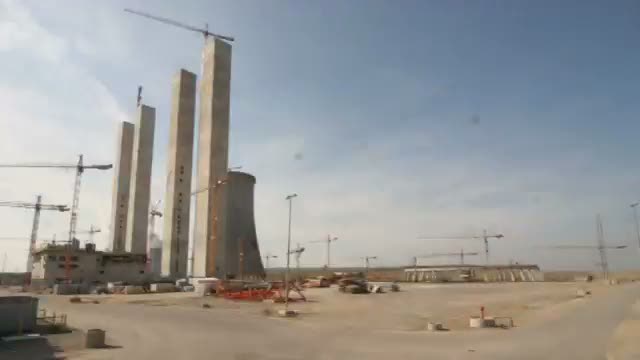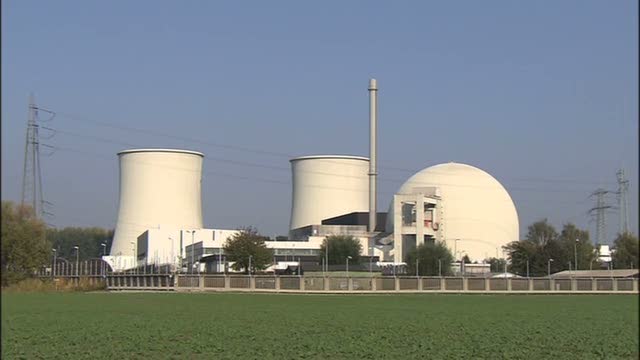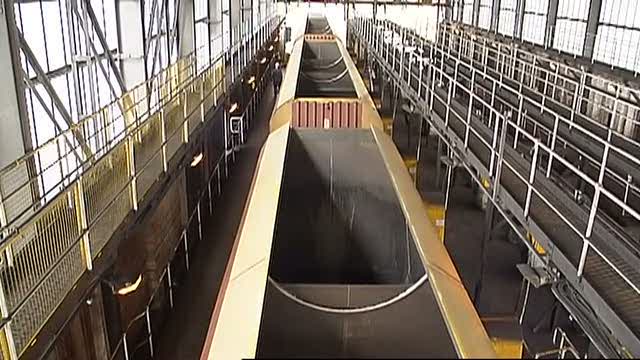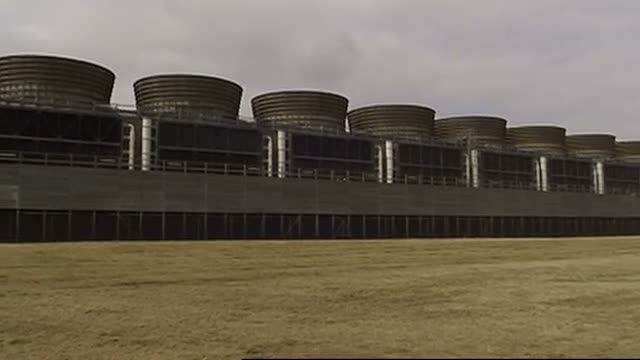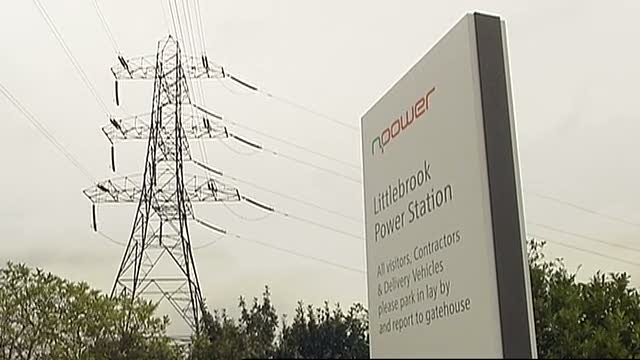Wie funktioniert der Strommarkt?
Was von der Stromrechnung im Kraftwerk ankommt
RWE AG (HoldCo)
ListEin animierter, ca. fünfminütiger Film, der den Weg des Geldes von der Stromrechnung eines privaten Haushalts bis ins Kraftwerk verfolgt
398,46 MB 1080p
How does the electricity market work?
From billing to earnings - power generation in the UK
RWE AG (HoldCo)
ListA five-minute animation tracks the cash-flow from a family's power bill to a conventional power station
322,96 MB 1080p
ADELE -Adiabatic compressed-air energy storage (CAES)
ADELE -Adiabatic compressed-air energy storage (CAES)
-
RWE AG (HoldCo)
ListStoring electricity safely, efficiently and in large amounts – that is one of the greatest challenges for the power supply of the future. RWE Power, General Electric, Züblin and DLR are facing this task in the ADELE project. The idea behind Adiabatic CAES for the electricity supply is to compress air at times of high electricity availability, to place the resulting heat in an interim heat-storage device and to inject the air into subterranean caverns. When electricity demand rises, this compressed air can be used to generate power in a turbine – while recovering the heat.
This adiabatic process, in which the heat of the compressed air is not lost, but remains in the process for use in power generation, differs from existing compressed-air storage facilities, above all when it comes to the much higher efficiencies (approx. 70%). Also, the heating process no longer uses natural gas. With a feasibility study the project partners have laid the basis for the development programme, which is starting now.
The aim is to erect a first demonstration plant after 2013 with a storage capacity of 1,000 megawatt hours and an electric output of up to 200 MW. This enables ADELE to provide substitute capacity at extremely short notice and replace 40 ultra-modern wind turbines for a period of five hours. Altogether, the parties involved in the project are making available € 10 million for the development phase by 2013. ADELE will help provide peak-load electricity from renewable energies – completely without CO2 emissions.
144,7 MB 576i
lignite-fired units with optimized plant technology, BoA, Neurath
lignite-fired units with optimized plant technology, BoA, Neurath, Germany
-
RWE AG (HoldCo)
ListBoA 2&3
Two new lignite-fired units with optimized plant technology (BoA) are being constructed at the existing Neurath location in Grevenbroich. After the first BoA plant, which was commissioned at Niederaußem in 2003, these will be the second and third units to boast what is the world’s most advanced design. These two power plant units will each have a gross capacity of 1,100 megawatt and an efficiency of over 43 percent.
819,99 MB 576i
BoA 2 & 3, before operation, german language
BoA 2& 3
RWE AG (HoldCo)
ListBoA 2&3
Two new lignite-fired units with optimized plant technology (BoA) are being constructed at the existing Neurath location in Grevenbroich. After the first BoA plant, which was commissioned at Niederaußem in 2003, these will be the second and third units to boast what is the world’s most advanced design. These two power plant units will each have a gross capacity of 1,100 megawatt and an efficiency of over 43 percent.
Optimized power plant process
Although the basic design of the BoA units is similar to that of existing plants, thanks to numerous significant improvements to the various plant components and process steps they constitute the best technology for lignite-based electricity generation available today. This results in improved utilization of the fuel used and even more environmentally compatible generation of electricity than older plants. By comparison, the new units’ efficiency is some 31 percent higher. The new BoA power plant will emit up to six million tons less CO2 per year than the old plants that BoA 2 and 3 will replace. Apart from carbon emissions, specific SO2, NOX and dust emissions will also be reduced by about 31 percent. RWE is investing more than 2.2 billion euros in the BoA project.
62,18 MB 576p
BoA 2 & 3 before operation, english version
BoA before operation, check
RWE AG (HoldCo)
ListBoA 2&3
Two new lignite-fired units with optimized plant technology (BoA) are being constructed at the existing Neurath location in Grevenbroich. After the first BoA plant, which was commissioned at Niederaußem in 2003, these will be the second and third units to boast what is the world’s most advanced design. These two power plant units will each have a gross capacity of 1,100 megawatt and an efficiency of over 43 percent.
Optimized power plant process
Although the basic design of the BoA units is similar to that of existing plants, thanks to numerous significant improvements to the various plant components and process steps they constitute the best technology for lignite-based electricity generation available today. This results in improved utilization of the fuel used and even more environmentally compatible generation of electricity than older plants. By comparison, the new units’ efficiency is some 31 percent higher. The new BoA power plant will emit up to six million tons less CO2 per year than the old plants that BoA 2 and 3 will replace. Apart from carbon emissions, specific SO2, NOX and dust emissions will also be reduced by about 31 percent. RWE is investing more than 2.2 billion euros in the BoA project.
62,18 MB 576p
FGD- test facility
flue-gas desulphurization, CO2, filtering sulphur dioxide
RWE AG (HoldCo)
ListEver since the 1980s, (FGD, or its German equivalent REA) plants have been (SO2) out of the flue gas from lignite-fired power stations. The scrubbing method, in which the SO2 is washed out using limestone slurry, has long since proved its worth. Today, more than 95% of the desulphurization plants in power stations and industrial facilities worldwide are being reliably and successfully operated on the basis of this technology.
However, the high efficacy of today's flue-gas scrubbing is no reason for RWE to rest on its laurels. Its success is the spur that drives us on to develop new processes designed to make coal-based power generation even more environmentally compatible. This is where the REAplus concept comes in. This has been implemented in a pilot plant at the Coal Innovation Centre in collaboration with Andritz Energy & Environment (AE&E), a plant builder.
What counts in this concept is that we optimize even further the chemical processes in the desulphurization to achieve the highest possible degree of SO2 capture. The progress here, compared with the previous method, lies in the staggered sequence of the scrubbing process and in improved contact between lime slurry and flue-gas SO2. The pilot scrubs 50,000 cubic metres of flue gas an hour from the BoA power plant. Trialling is focusing on the capture targets to be achieved and the suitability for continuous operations.
REAplus' highly efficient desulphurization renders superfluous any pre-treatment of flue gases in the pilot CO2 scrubbing plant that is likewise linked to BoA 1. The combination of REAplus and post-combustion capture creates conditions at Niederaussem that are unique worldwide for trialling modern, trail-blazing power-plant engineering.
832,57 MB 576i
coal-fired power plant
Power plant Niederaußem, power plant Werne, power plant Neurath
-
RWE AG (HoldCo)
ListBoA 2&3
Two new lignite-fired units with optimized plant technology (BoA) are being constructed at the existing Neurath location in Grevenbroich. After the first BoA plant, which was commissioned at Niederaußem in 2003, these will be the second and third units to boast what is the world’s most advanced design. These two power plant units will each have a gross capacity of 1,100 megawatt and an efficiency of over 43 percent. Like all other large lignite-fired power plants, this power plant, too, will be operated in base load.
Optimized power plant process
Although the basic design of the BoA units is similar to that of existing plants, thanks to numerous significant improvements to the various plant components and process steps they constitute the best technology for lignite-based electricity generation available today. This results in improved utilization of the fuel used and even more environmentally compatible generation of electricity than older plants. By comparison, the new units’ efficiency is some 31 percent higher. The new BoA power plant will emit up to six million tons less CO2 per year than the old plants that BoA 2 and 3 will replace. Apart from carbon emissions, specific SO2, NOX and dust emissions will also be reduced by about 31 percent. RWE is investing more than 2.2 billion euros in the BoA project.
Infrastructure
The two new units are being erected on the tract of land to the east of the existing Neurath power plant and will partly be connected to the supply and disposal facilities of existing power plants, some of which will be retrofitted or expanded for that purpose.
A new, underground storage facility will be constructed for the plant’s lignite supply. The lignite will be delivered from the Garzweiler and Hambach opencast mines by the company’s own North-South railway system. From there, the lignite will be transported to the day bins in the boiler houses using a new belt conveyor system.
601,88 MB 576p
combined-cycle plant
combined-cycle plant Lingen, Germany
RWE AG (HoldCo)
ListCutting-edge gas-fired power station at Lingen comes on stream
The 876-MW combined-cycle gas turbine (CCGT) power station has an efficiency of nearly 60 % and was built at a cost of approx. €500 million.
48,23 MB 576p
combined-cycle plant Lingen, Germany
combined-cycle plant, Lingen, germany, outside
RWE AG (HoldCo)
ListCutting-edge gas-fired power station at Lingen comes on stream
The 876-MW combined-cycle gas turbine (CCGT) power station has an efficiency of nearly 60 % and was built at a cost of approx. €500 million.
127,93 MB 576p
combined-cycle plant, Lingen, Germany, turbine house
turbine house, Lingen, inside
RWE AG (HoldCo)
ListCutting-edge gas-fired power station at Lingen comes on stream
The 876-MW combined-cycle gas turbine (CCGT) power station has an efficiency of nearly 60 % and was built at a cost of approx. €500 million.
138,41 MB 576p
control center combined-cycle plant, Lingen
combined-cycle plant, control room, inside, Lingen
RWE AG (HoldCo)
ListCutting-edge gas-fired power station at Lingen comes on stream
The 876-MW combined-cycle gas turbine (CCGT) power station has an efficiency of nearly 60 % and was built at a cost of approx. €500 million.
99,61 MB 576p
combined-cycle plant, animated graphics, 3D
combined-cycle plant, how works a CCP, 3D
RWE AG (HoldCo)
ListCutting-edge gas-fired power station at Lingen comes on stream
The 876-MW combined-cycle gas turbine (CCGT) power station has an efficiency of nearly 60 % and was built at a cost of approx. €500 million.
36,39 MB 576p
opencast lignite mine Garzweiler
opencast lignite mine
RWE AG (HoldCo)
ListIn June 2006, RWE Power starts production in its ‘Garzweiler II’ opencast lignite mine. It directly adjoins the ‘Garzweiler’ opencast mine and contains lignite reserves of 1.3 billion tons across an area of 48 km². The start of production completes a planning and preparation phase of over 20 years. In the next four decades, the new mining field is to account for approx. 40 per cent of production in the Rhenish lignite mining area and, among other things, to supply the twin-unit plant with optimised technology at Neurath, which is being built.
521,14 MB 576i
opencast mine Garzweiler
opencast mine Garzweiler, Germany, RWE Power
RWE AG (HoldCo)
ListOur lignite deposits will be available for generations to come. We extract just less than 100 million tons of lignite per year, a quantity ensured until the middle of this century by existing approvals for opencast mines based on deposits of up to 4 billion tons. These facts make it clear that lignite plays a key role in the energy mix of RWE Power.
Since our lignite is located just under the surface, it is mined in opencast operations. In the opencast mines of Garzweiler, Hambach and Inden, gigantic bucket wheel excavators dig the brown gold out of the earth. These excavators are the hallmark of the state-of-the-art mining technology used by RWE Power: standing 90 meters tall and 200 meters long and weighing some 13,000 tons, they are some of the world’s largest mobile machines.
Opencast mines always involve an interference with nature and habitats. Therefore, extraction and the subsequent recultivation of the depleted mining areas are two corporate goals of equal priority. This yields ecologically high-quality landscapes with lively flora and fauna. For the people who have to give way to the advancing opencast lignite mines, joint and socially compatible resettlement schemes have proved their worth down many decades.
451,94 MB 1080p
Open-cast mining Hambach
Energy of the future – How does the lignite is mined in open pit Hambach
RWE AG (HoldCo)
ListFilm of the exploitation of lignite in open pit Hambach
1,16 MB 1080p
RWE Power, opencast mine Hambach, Germany
opencast mine Hambach, Germany
RWE AG (HoldCo)
ListOur lignite deposits will be available for generations to come. We extract just less than 100 million tons of lignite per year, a quantity ensured until the middle of this century by existing approvals for opencast mines based on deposits of up to 4 billion tons. These facts make it clear that lignite plays a key role in the energy mix of RWE Power.
Since our lignite is located just under the surface, it is mined in opencast operations. In the opencast mines of Garzweiler, Hambach and Inden, gigantic bucket wheel excavators dig the brown gold out of the earth. These excavators are the hallmark of the state-of-the-art mining technology used by RWE Power: standing 90 meters tall and 200 meters long and weighing some 13,000 tons, they are some of the world’s largest mobile machines.
Opencast mines always involve an interference with nature and habitats. Therefore, extraction and the subsequent recultivation of the depleted mining areas are two corporate goals of equal priority. This yields ecologically high-quality landscapes with lively flora and fauna. For the people who have to give way to the advancing opencast lignite mines, joint and socially compatible resettlement schemes have proved their worth down many decades.
371,2 MB 1080p
Biotechnological utilization of CO2
Biotechnological utilization of CO2
RWE AG (HoldCo)
ListConverting carbon dioxide with microorganisms into biomass or directly to make valuable materials – that is the object of our research cooperation with the biotechnology company BRAIN. The aim is to breed microorganisms and use them to explore innovative CO2 conversion and synthesis pathways. The CO2-containing flue gases from lignite power stations are to be the "feed" for these "designer microorganisms".
BRAIN is a leading company in white biotechnology and has access to previously unknown microorganisms and to millions of novel enzymes and synthesis pathways. Building up on this "toolbox of Nature", synthetic biotechnologies permit the design of microorganisms for developing novel ways toward products and materials made of CO2. Our cooperation develops and researches such novel microorganisms. The point about this development is that the microorganisms, thanks to new and optimized metabolism pathways ("pathway engineering"), bind more CO2 more efficiently than their original precursors.
Ultimately, biomass and industrially usable products emerge, like new biomaterials, bioplastics and interim chemical products, for which possible applications are being investigated, eg as construction and insulation material, and in the production of fine and special chemicals, but also bulk chemicals. Besides R&D activities at BRAIN in Zwingenberg, trials are run at the Coal Innovation Centre, examining the growth behaviour of microorganisms in the original lignite flue gas.
35,97 MB 360p
Chemical conversion of CO2
Chemical conversion of CO2, Dream Production
RWE AG (HoldCo)
ListThe "Dream Production" project, which is funded by the Federal Ministry of Education and Research is examining whether high-quality plastics – so-called polyurethanes – can be made on the basis of CO2 from power-plant flue gases.
For the project, the CO2 scrubber at the Coal Innovation Centre was retrofitted with a plant for cleaning and liquefying carbon dioxide. In this plant, the gas is filled into bottles, which are made available to the project partners so that they can investigate its usability for chemical synthesis.
Here, power plant CO2 is being used in a pilot system at Bayer Technology Services to make polyether polycarbonate polyols (PPP for short) which are then further processed by Bayer MaterialScience to make polyurethane plastics. Besides their use in building insulation, we find that light-weight components of polyurethanes in the automotive industry, say, make a contribution to lowering weight and, hence, help achieve significant energy savings. But polyurethanes are also a part of everyday life as material in high-quality mattresses and upholstered furniture.
50,86 MB 360p
Conversion of CO2 into synthesis gas
Conversion of CO2 into synthesis gas
RWE AG (HoldCo)
ListThe CO2RRECT project, which is funded by the Federal Ministry of Education and Research, has been initiated by RWE Power together with Siemens, Bayer and several universities and research institutes. The aim of the project is to develop a process for converting CO2 from the power station’s flue gases with hydrogen into synthesis gas, a versatile raw material used by industry. The required hydrogen will be produced using the existing excess supply of renewables. For this purpose, a flexible water electrolysis plant developed by Siemens will start trial operations at the Niederaussem power plant site in the autumn of 2012.
20,13 MB 360p
high-performance scrubber REAplus
high-performance scrubber REAplus
RWE AG (HoldCo)
ListEver since the 1980s, flue-gas desulphurization (FGD, or its German equivalent REA) plants have been filtering sulphur dioxide (SO2) out of the flue gas from lignite-fired power stations. The scrubbing method, in which the SO2 is washed out using limestone slurry, has long since proved its worth. Today, more than 95% of the desulphurization plants in power stations and industrial facilities worldwide are being reliably and successfully operated on the basis of this technology.
However, the high efficacy of today's flue-gas scrubbing is no reason for RWE to rest on its laurels. Its success is the spur that drives us on to develop new processes designed to make coal-based power generation even more environmentally compatible. This is where the REAplus concept comes in. This has been implemented in a pilot plant at the Coal Innovation Centre in collaboration with Andritz Energy & Environment (AE&E), a plant builder.
What counts in this concept is that we optimize even further the chemical processes in the desulphurization to achieve the highest possible degree of SO2 capture. The progress here, compared with the previous method, lies in the staggered sequence of the scrubbing process and in improved contact between lime slurry and flue-gas SO2. The pilot scrubs 50,000 cubic metres of flue gas an hour from the BoA power plant. Trialling is focusing on the capture targets to be achieved and the suitability for continuous operations.
REAplus' highly efficient desulphurization renders superfluous any pre-treatment of flue gases in the pilot CO2 scrubbing plant that is likewise linked to BoA 1. The combination of REAplus and post-combustion capture creates conditions at Niederaussem that are unique worldwide for trialling modern, trail-blazing power-plant engineering.
31,88 MB 360p
carbon dioxide coversion and usage, CO2, english version
carbon dioxide coversion and usage, CO2, english version
RWE AG (HoldCo)
ListThe "Dream Production" project, which is funded by the Federal Ministry of Education and Research is examining whether high-quality plastics – so-called polyurethanes – can be made on the basis of CO2 from power-plant flue gases.
For the project, the CO2 scrubber at the Coal Innovation Centre was retrofitted with a plant for cleaning and liquefying carbon dioxide. In this plant, the gas is filled into bottles, which are made available to the project partners so that they can investigate its usability for chemical synthesis.
Here, power plant CO2 is being used in a pilot system at Bayer Technology Services to make polyether polycarbonate polyols (PPP for short) which are then further processed by Bayer MaterialScience to make polyurethane plastics. Besides their use in building insulation, we find that light-weight components of polyurethanes in the automotive industry, say, make a contribution to lowering weight and, hence, help achieve significant energy savings. But polyurethanes are also a part of everyday life as material in high-quality mattresses and upholstered furniture.
21,81 MB 576p
carbon dioxide usage and conversion, german language
CO2, carbon dioxide, conversion and usage
RWE AG (HoldCo)
ListThe "Dream Production" project, which is funded by the Federal Ministry of Education and Research is examining whether high-quality plastics – so-called polyurethanes – can be made on the basis of CO2 from power-plant flue gases.
For the project, the CO2 scrubber at the Coal Innovation Centre was retrofitted with a plant for cleaning and liquefying carbon dioxide. In this plant, the gas is filled into bottles, which are made available to the project partners so that they can investigate its usability for chemical synthesis.
Here, power plant CO2 is being used in a pilot system at Bayer Technology Services to make polyether polycarbonate polyols (PPP for short) which are then further processed by Bayer MaterialScience to make polyurethane plastics. Besides their use in building insulation, we find that light-weight components of polyurethanes in the automotive industry, say, make a contribution to lowering weight and, hence, help achieve significant energy savings. But polyurethanes are also a part of everyday life as material in high-quality mattresses and upholstered furniture.
132,12 MB 576p
time lapse
RWE Power BOA construction site
-
RWE AG (HoldCo)
ListBoA 2&3
Two new lignite-fired units with optimized plant technology (BoA) are being constructed at the existing Neurath location in Grevenbroich. After the first BoA plant, which was commissioned at Niederaußem in 2003, these will be the second and third units to boast what is the world’s most advanced design. These two power plant units will each have a gross capacity of 1,100 megawatt and an efficiency of over 43 percent. Like all other large lignite-fired power plants, this power plant, too, will be operated in base load.
Optimized power plant process
Although the basic design of the BoA units is similar to that of existing plants, thanks to numerous significant improvements to the various plant components and process steps they constitute the best technology for lignite-based electricity generation available today. This results in improved utilization of the fuel used and even more environmentally compatible generation of electricity than older plants. By comparison, the new units’ efficiency is some 31 percent higher. The new BoA power plant will emit up to six million tons less CO2 per year than the old plants that BoA 2 and 3 will replace. Apart from carbon emissions, specific SO2, NOX and dust emissions will also be reduced by about 31 percent. RWE is investing more than 2.2 billion euros in the BoA project.
Infrastructure
The two new units are being erected on the tract of land to the east of the existing Neurath power plant and will partly be connected to the supply and disposal facilities of existing power plants, some of which will be retrofitted or expanded for that purpose.
A new, underground storage facility will be constructed for the plant’s lignite supply. The lignite will be delivered from the Garzweiler and Hambach opencast mines by the company’s own North-South railway system. From there, the lignite will be transported to the day bins in the boiler houses using a new belt conveyor system.
231,74 MB 576i
nuclear power plant Biblis, Germany
nuclear power plant Biblis, Germany
-
RWE AG (HoldCo)
ListThe two units of th nuclear power plant Biblis generated since 1974 and 1976 power - total capacity 2.500 MW. They supplied about 6.5 million households with energy.
635,44 MB 576p
Headquaters, hard coal fired power plant
Headquaters Swindon, UK, hard coal fired power plant, Didcot
-
RWE AG (HoldCo)
ListRWE npower is a leading integrated UK energy company and is part of the RWE Group, one of Europe’s leading utilities. We serve around 6.6 million customer accounts and produce more than 10% of the electricity used in England and Wales.
We supply electricity and gas to residential and business customers through our retail business, npower, and we operate and manage a flexible portfolio of coal, oil and gas-fired power stations. We also manage a portfolio of cogeneration plant and, through RWE Power International, we sell our expertise in power generation to third parties.
218,1 MB 576p
combined cycle gas power plant
Didcot B, UK
-
RWE AG (HoldCo)
ListOur site at Didcot is host to two power stations - the 2,000 MW dual-fired A station and the 1,360 MW combined cycle gas turbine B station.
Together the two power stations are capable of producing enough electricity to meet the needs of over 3 million people - equivalent to the demand of three counties the size of Oxfordshire.
171,97 MB 576p
oil-fired power station Littlebrock
oil-fired power station Littlebrock, UK
-
RWE AG (HoldCo)
ListLittlebrook is an oil-fired power station. The station was built in the 1980’s and is located in Kent on south bank of the River Thames next to the Queen Elizabeth 2 Bridge and the Dartford Tunnel. Littlebrook has an installed generating capacity of 1,245MW.
The original Littlebrook Power Station first started generating electricity in 1939. The current station is the fourth to be built on the site, and began commercial operation in 1981.
Littlebrook Power Station has three turbine generating units - two of the generating units are in commercial operation and one is in reserve. In addition, the station has three sets of gas-turbine units capable of providing additional support to the National Grid system when required.
88,29 MB 576p


